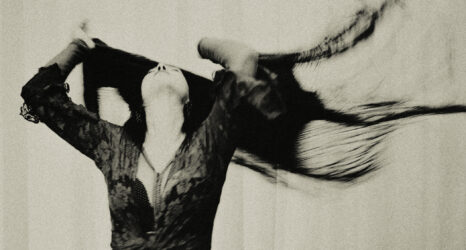It was like Comic-Con, but for cat people.
Last weekend I attended the first ever CatCon in downtown Los Angeles. Myself and some 10,000-odd cat lovers gathered together under one roof to proudly sport cat ears, get caticures and share thousands of pictures of our cats with one another.
But I quickly discovered that CatCon wasn’t just a place to bask in the glory of celebrity cats and drop serious dollars on purraphernalia. With seminars entitled “Goodbye Dowdy, Hello Gorgeous: Debunking the Cat Lady Myth” and “You Can Be a Cat Guy and Still Be Cool,” the message was clear: CatCon was trying to push cats and people who liked cats into a better light—like where dog people hang out.
“My goal is to break down the stereotype of the weird cat person,” said Susan Michals, the mastermind behind CatCon. Mayim Bialik, the actor known for her roles in The Big Bang Theory and Blossom, echoed the sentiment in her introduction to the “Goodbye Dowdy, Hello Gorgeous” seminar: “This event is a great opportunity to change the face of the crazy cat lady,” she said. “It’s still one of those stereotypes that needs to be demolished. We’ve come a long way, but we have a long way to go.”
It seemed innocent enough; CatCon was going to help the world see that cat lovers weren’t just a stereotype. But after sitting through a 30-minute slideshow of “chic and classy cat ladies” (think Bridgette Bardot and Marilyn Monroe) and listening to all of the many reasons why Choupette Lagerfeld, Karl Lagerfeld’s pet cat, wants cat ladies to dress better, it became pretty clear that CatCon wasn’t trying to change the world’s perception of the cat lady, it was trying to make the cat lady more palatable—more attractive, even—to the rest of the world.
The term “cat lady” comes with obvious baggage. The cat lady is crazy, dowdy, a spinster, a man-hater. She’s unbecoming. She’s even unwomanly. The word “feminist” carries many of the same connotations, so much so that we still see young, successful women refusing to identify as feminists out of fear of being labeled as, say, “bra-burning lesbians.”
In the same way that an effective feminist movement can’t afford to bash past feminists, you can’t expect to empower, or popularize, or do whatever CatCon was trying to do for the cat lady, by tearing down all of the quirks and peculiarities that got her here today.
There’s a reason why women and cats are so closely tied. They share a long history of being deified, vilified, persecuted and likened to one another. But cats, ladies and cat ladies didn’t always carry around bad baggage. Some cultures even worshipped cats and women alike. The ancient Egyptians revered the Cat Goddess, Bastet, who was half feline, half woman; Norse mythology recognized Freyja, a goddess of both beauty and strength who rode on a chariot led by two cats; and the ancient Chinese honored the feline goddess, Li Shou, for pest control and fertility.
These and other representations of cats and goddesses were passed down through folklore and paganism, but as the Catholic Church and monotheism gained more power, paganism and the goddesses that came with it were condemned.
In 1486, the Malleus Maleficarum was published. Also known as the Witch Hammer, the Malleus served as a guidebook for how to identify and prosecute witches during the Inquisition. Prior to its publication, anyone who questioned Catholicism could be branded a heretic, making scientists and writers prime scapegoats. But the Malleus was unique in that it turned society’s attention toward witches, defining both women and cats as new targets and constructing some of the first negative associations between the two.
As an extension of persecuting pagan gods and goddesses, the Church reduced the once deified cats to evil personified as the Devil. Cats, it was believed, were used by the Devil to communicate with witches and recruit young maidens into witchcraft. Even scripture used the cat to symbolize evil, and the dog to symbolize good.
In 1484, Pope Innocent VIII, at the request of the authors of the Malleus, reinforced this vilification, leading to the torturing and killing of hundreds of thousands of cats. And while scholars vary on the numbers, an estimated 35,000 to 100,000 people were executed for witchcraft during the Inquisition—many of them, of course, women.
Fast forward about 400 years to find both cats and woman thoroughly domesticated. So much so that when women took up the suffrage movement, anti-suffrage postcards used cats to depict “suffragettes as silly, infantile, incompetent and ill-suited to political engagement.” And activist Marie Jenney Howe noted this association in her satirical “Anti-Suffrage Monologue” when she wrote “women cannot band together. They are incapable of organization. No two women can be friends. Women are cats.”
While today’s cat lady lives in a much kinder world, she’s still painted with the crazy cat lady brush. But so what? The cat lady is and has always deviated from the norm. It is this deviation that made her a goddess, this deviation that made her a target, and this deviation that makes her so intriguing.
All of the traits that CatCon wants to debunk about the cat lady are qualities that make her unique. To some she may be a spinster, but to me she is independent. She may be considered dowdy, but I say she has authentic and individual style. To some she may even be crazy, but to me she is a woman who has always felt empowered to strike her own path.
In the past, cat ladies had to suffer for these qualities. Today, we should be celebrating the cat lady’s eccentricities, not trying to tone them down. Let’s reclaim “crazy cat lady.” I don’t want to be a boring dog person.
Photo courtesy of Wikimedia Commons user We Hope licensed under Creative Commons 2.0





